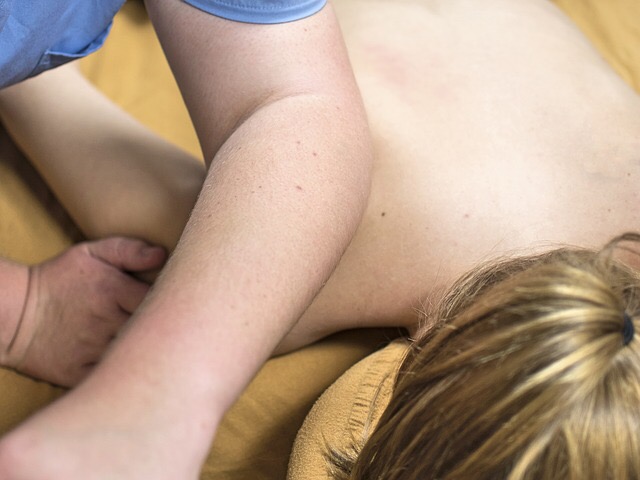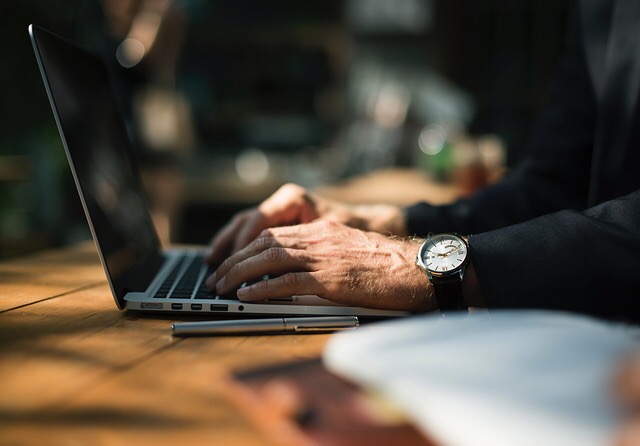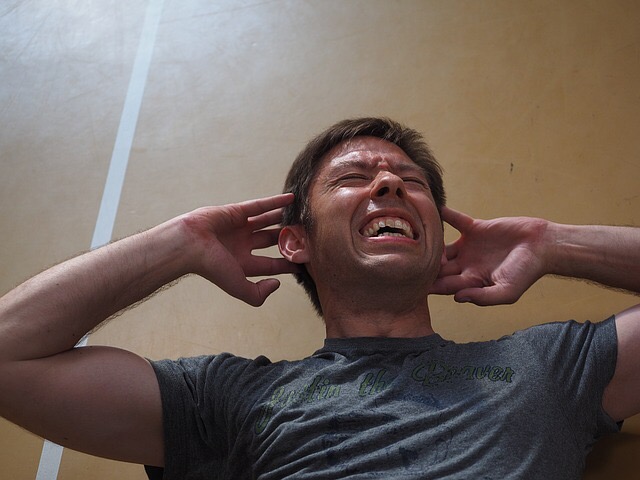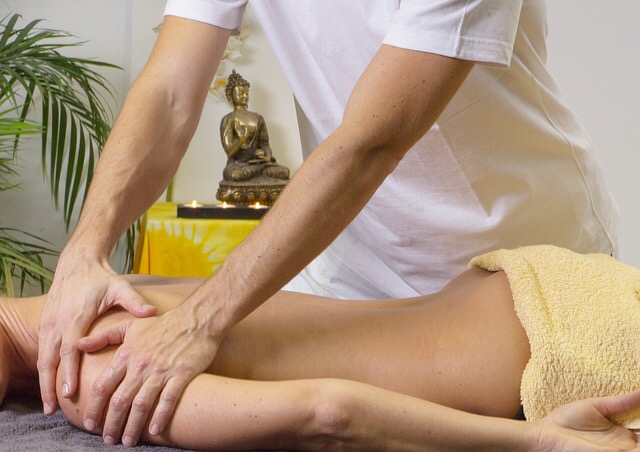Blog
Where a Woman’s Back Hurts
Certain back pain conditions affect women much more than men
To begin with, women have a greater diversity of primary body shapes than men:
- Apple- triangle downwards; broader shoulders and bust than hips
- Pear-triangle upwards; broader hips than shoulders
- Banana- straighter body type, with a waist that is less than 9 inches than the hips or bust
- Hourglass- triangles opposing and facing inwards
These terms refer to a woman’s skeletal structure and give us key insights into where her body distributes weight, both from muscle and fat; we use this map of weight distribution to determine the source of certain forms of back pain. No matter what your gender or body shape, weight control is an integral part of back care. Yet, as we will find, women are still disproportionately at risk for other back pain conditions.
Commuting More Comfortably in Houston
Houston is infamous for its traffic
This article states that the average worker spends 51 minutes commuting, making Houston the city with the 11th longest average commute in the nation. What’s more, another survey placed Houston 6th in the nation in the category of most stressed out commuters. One of the the more silent victims of our commuter culture is your spine! Most cars are not designed with the human spine in mind; they are often ergonomically negligible. We then combine this lack of support with poor posture and high stress levels which pose a significant threat to our musculoskeletal balance. 51 minutes represents an opportunity or a curse for commuter spines across our community- read on to find out how you can protect your spine against the daily commute.
Mindful Food Choices for Chronic Back Pain
Are you squandering an opportunity when it comes to managing your back pain?
Nutrition, along with exercise, is the best way to manage chronic, daily back pain. Because your embattled spine needs all the support it can get, we are really doing ourselves no favors when we don’t take advantage of nutrition.
Nutrition is the best way to:
- Mitigate inflammation
- Maintain a healthy weight
- Provide your spine with the vitamins, minerals and micronutrients it needs to repair and restore itself
- Support healthy repair and rebuilding of the supportive musculature
So why would we choose foods that literally do the opposite: increase inflammation, body weight and back pain, without giving us anything but a temporary pleasure? The instant gratification of the western diet has many of us trapped in its jaws where it wants us to stay, regardless of our back pain. It’s time to stop squandering this golden opportunity and make the right choices- we can promise you, your back will thank you!
Lower Back Pain Relief: Focus on Food
Nutrition is a powerful way of influencing your spinal health
Along with exercise, nutrition is the best way to manage your back pain on a daily basis. Whether you are looking to keep pain away, or if you are living with chronic back pain, choosing the right foods allows you to provide embattled parts of your body with the nutrients they need to heal and maintain strength. It is also a key way of maintaining a healthy target weight that prevents you from overburdening your spine with excess pounds. The basic dietary formula to account for back pain includes plenty of water, lots of lean proteins and healthy fats. Complex (not simple) carbohydrates are also important for providing vitamins, minerals and fiber to the diet.
Why Ignoring Back Pain Is A Big Mistake
Ignoring your back pain is the worst thing you can do
Humans have an incredible capacity to live with pain, especially the kind that accrues slowly over time like the back pain and dysfunction related to our job. We can ignore it, or worse mask it, and move on with our daily activities; this approach sets us up for a lot of pain and degeneration in the future, but these considerations are subjugated to the importance of the task in front of you. It is amazing how we will let spinal flexibility, resilience, stability and posture fly out the window just because we have to get the job done. At Holmes Chiropractic, we believe that ignoring or actively blocking pain signals is the wrong way of going about things.
Healthy Habits for Hurting Hands
Stiff, sore hands are not something to take lightly!
Tenderness and pain in the joints and tissues of the hands is ubiquitous among office workers due to the repetitive trauma inherent in computer work. If you spend a lot of time interacting with a computer, it behooves you to take measures that will protect your hands so you can avoid conditions such as carpal tunnel syndrome and arthritis. At Holmes Chiropractic, we start with ergonomics- are you setting your hands up for success or future pain? Depending on the level of your wrists and how they rest on the desk, you could be adding more strain than is necessary to your hands. Once ergonomics are in place, you need to be proactive about taking care of your hands. Read on to find out how.
Are Situps Hurting your Spine?
Building core strength without sacrificing spinal health
Core strength and stability is an essential component of spinal health. The situp is a traditional exercise for building core strength that has long been demonized by spinal health professionals, but not for the reason you might think. The fact is, most people do situps incorrectly- they have a half-formed notion of what a real situp should look like and they set out to build a set of abs by religiously performing a movement that is bad for the spine.
- When you do a situp incorrectly, you flatten the natural curve of your spine.
- Many people over-engage the hip flexor muscles, which means they are sacrificing the core-strengthening of the exercise, while over-tightening a muscle that creates a pull on the lower back.
- This is an isolated activity which creates repetitive stress for one part of the body while neglecting other muscles.
With this system, you could end up with a sore back and no abs! So let’s take a more practical approach to developing core strength.
Maintaining Function in the Shoulder, the Body’s Most Mobile Joint
The shoulder is the most mobile joint in the human body
A joint that is utilized so often is a joint that is prime for wear and tear. At the point where it attaches the arm to the upper body, there is a complex network of nerves, tendons and tissues which all have the potential to suffer injury and cause pain. The rotator cuff is a collection of tendons (tissues that attach muscle to bone) and ligaments that support the arm at the shoulder joint. This rotator cuff is furthe reinforced by cartilage and ligaments that give your shoulder strength and support proper range of motion. Understanding the anatomy of this epicenter of movement helps us understand why many normal actions become fraught with pain and weakness when the shoulder starts acting up. So how can chiropractic help?
The Deep-Rooted Causes of Sporting Injuries
When we suffer sports injuries, where do we assign blame?
It is easy to point to faulty footwear or old equipment, but the truth is that the majority of sports injuries are entirely preventable. The expression, “leave it all on the field,” signals that athletes demand a lot from their bodies, often taking out more than they put in. The most common sports injuries that we treat involve strains and sprains. These injuries are the culmination of your body reaching a breaking point, and that breaking point is likely due to a number of factors both internal and external. So we ask: is that breaking point avoidable? Our job at Holmes Chiropractic is to help you exercise the greatest degree of control over the factors within your body.
Golfing your Best Game with Chiropractic
Golf places unique stresses on the body
Golf is an excellent sport for promoting mental and physical wellbeing; it is an opportunity to challenge yourself while still offering plenty of opportunity for social interaction. But whether you are playing against yourself or a competitor, don’t underestimate the golf swing- it is one of the most stressful motions for the spine and as such the game of golf presents unique challenges for spinal health. By understanding the biomechanics of the golf swing, we can improve our level of performance on the course while preventing injuries and spinal degeneration.









